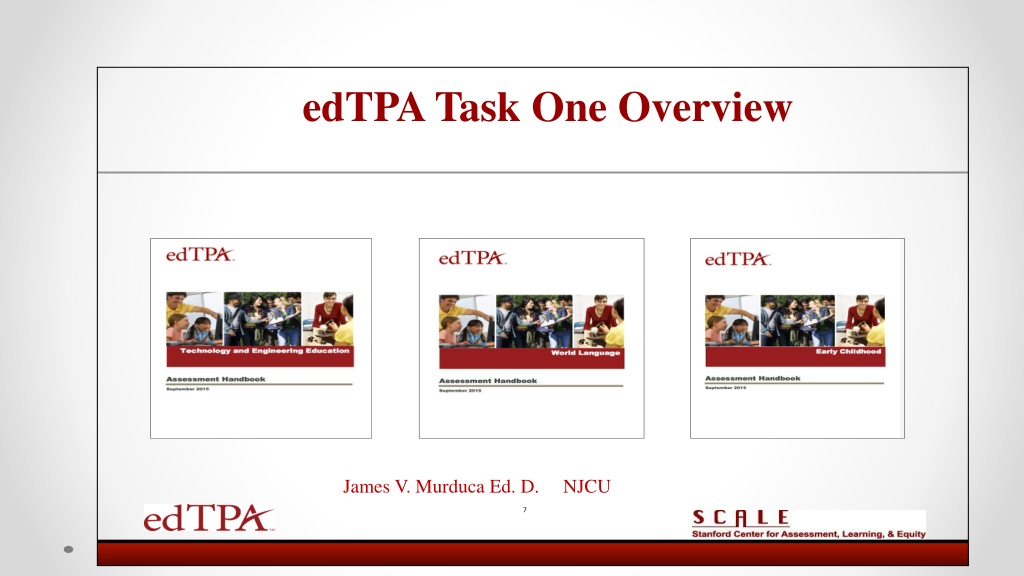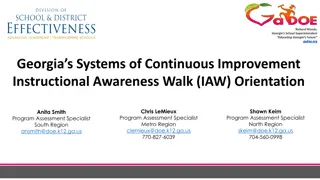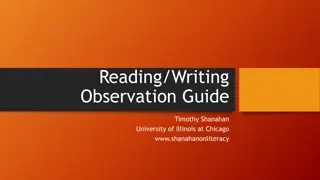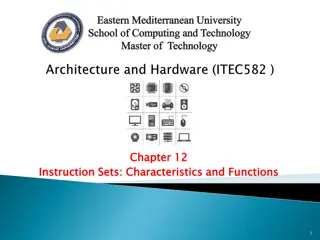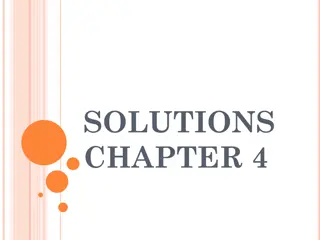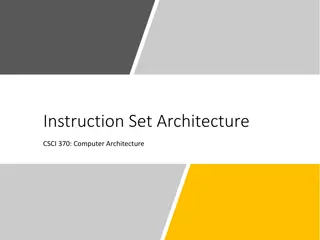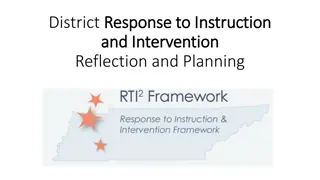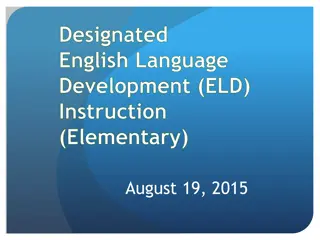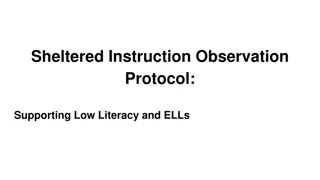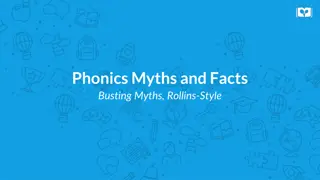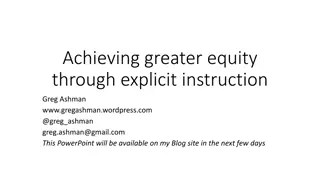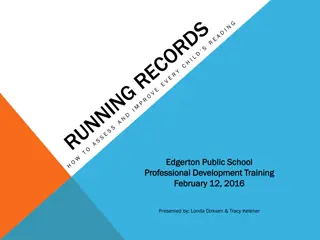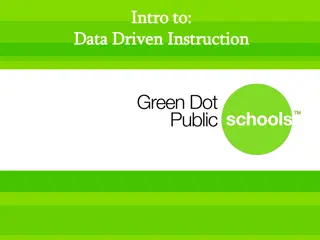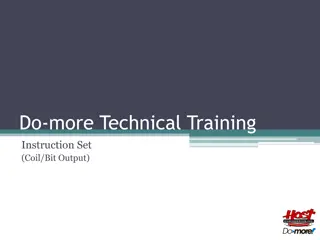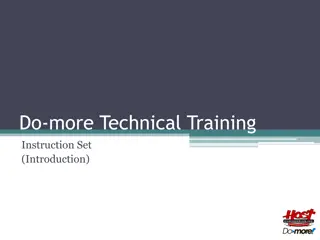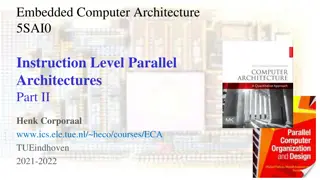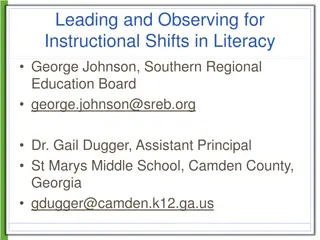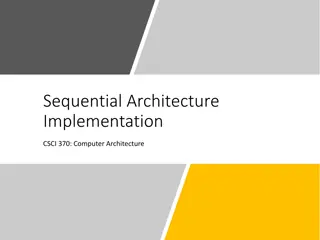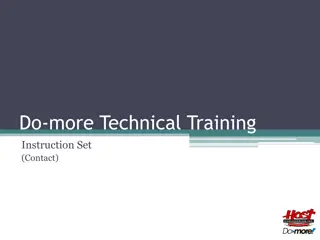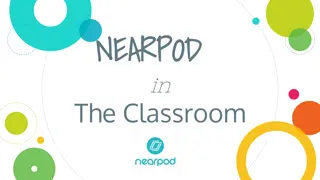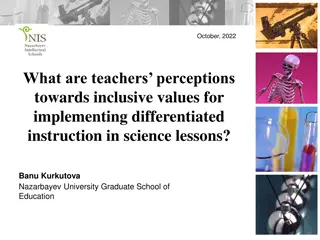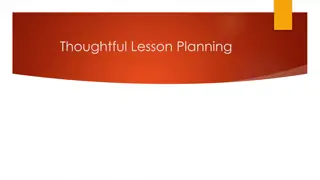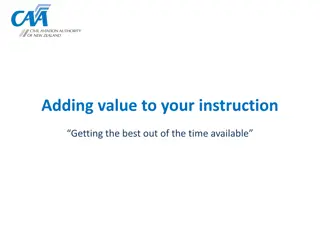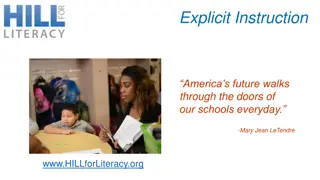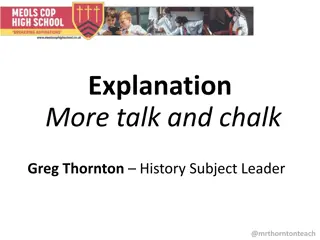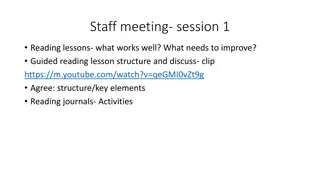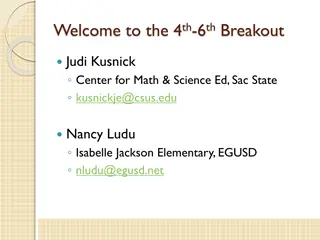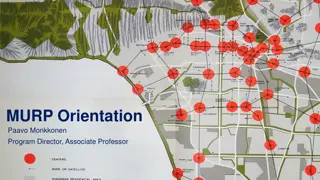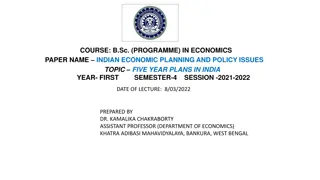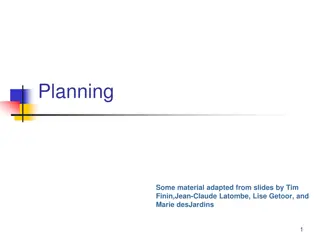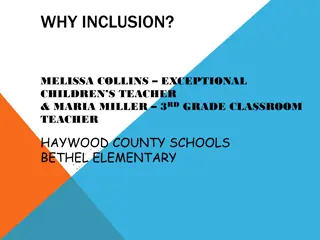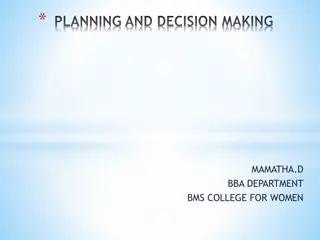Planning Lessons for Effective Instruction
In preparation for edTPA Task 1, focus on planning a 3-5 lesson learning segment to meet the needs of all learners. Consider addressing Common Core standards, building on prior knowledge, aligning with curricula, and collaborating with your cooperating teacher. Emphasize the importance of academic language, objectives using behavioral verbs, and engaging students through various instructional methods. The learning segment should include elements such as introducing concepts, engaging students, and conducting assessments.
Uploaded on Sep 28, 2024 | 0 Views
Download Presentation

Please find below an Image/Link to download the presentation.
The content on the website is provided AS IS for your information and personal use only. It may not be sold, licensed, or shared on other websites without obtaining consent from the author. Download presentation by click this link. If you encounter any issues during the download, it is possible that the publisher has removed the file from their server.
E N D
Presentation Transcript
edTPA Task One Overview James V. Murduca Ed. D. NJCU 7
Task 1: Planning = Intended Teaching
Think about. Your 3-5 lesson learning segment. Your student population How are you going to plan to meet the needs of all of your learners? Focus upon rubrics 1-5
Planning Your Lessons A. Central Focus i. Address Common Core, local or NJSLS B. Build on prior knowledge C. Consider your assessment (Backward Planning) i. Informal (Formative) ii. Formal (Summative) D. Lessons are aligned with the district, school, or department curricula E. Collaborate with your cooperating teacher F. Discuss and write about follow-up lessons
Prior Knowledge Students with background knowledge on a given topic are likely to grasp new information on that topic quickly and well (Marzano, 2004). Conversely, a lack of prior knowledge can create a misfire in the learning process.
edTPA Academic Language Betsy had never tackled the Cement Mixer before. Although many fears cycled through her mind, her two main concerns were handling the backdoor and the lip. Her confidence rose, however, as she reminded herself that if she could just get into the barrel she had a good chance of winning, especially if conditions were cooking. She stared out at the horizon, shook her fist triumphantly in the air, and shouted, "I'm ready for you, Meat Grinder! I can handle the biggest Macker you can deliver!
Planning Elements The Lesson Plan Illustrate: v. Academic Language C. YourObjectives: i. Use Behavioral Verbs ii. Build on Bloom s Taxonomy A. Creativity B. Knowledge of: i. Your students ii. Content iii. Curriculum iv. Standards
The Learning Segment Day 1 Day 2-4 Day 3-5 Introduction of a concept Instruction Student engagement Instruction Student engagement Informal assessment Instruction Formal assessment
Planning: Task 1 Artifacts and Commentary What to Submit Response Length No more than 4 pages including prompts Part A Context for Learning No more than 4 pages per lesson Part B Lesson Plans for Learning Segment No more than 5 pages of Key instructional materials per lesson Part C Instructional Materials No Limit Varied Assessments Part D Assessments No more than 9 pages of commentary including prompts Part E Planning Commentary (Template Provided)
Task 1: Planning for Instruction and Assessment What Do I Need To Think About What Do I Need To Do Student knowledge and abilities Select a class Desired learning outcomes for students Provide context information Knowledge of students assets to inform planning Identify a learning segment to plan, teach, and analyze How to design instructional strategies, tasks, and assessments to support learning and language use Identify a central focus for the learning segment Lessons that support students to develop and use language that deepens content understanding Determine content standards and objectives How are the teaching strategies supported by research and theory about how students learn Identify and plan to support language demands Deepen students knowledge using academic language through discourse and syntax. Write a plan, provide citations for all materials you did not create, respond to commentary prompts, submit copies of written, oral, and performance assessments
Task 1: Planning Rubrics Rubric 1 Planning for content understanding Rubric 2 Planning to support varied student learning needs Using knowledge of students to inform teaching and learning Identifying and supporting language demands Rubric 3 Rubric 4 Rubric 5 Planning assessments to monitor and support student learning
References edTPA Elementary Literacy handbook Stanford Center for Assessment, Learning and Equity, (2017). Board of Trustees of the Leland Stanford Junior University Whittaker, A., (2016). SCALE-Stanford Center for Assessment, Learning & Equity. edTPA Professional Development workshop
